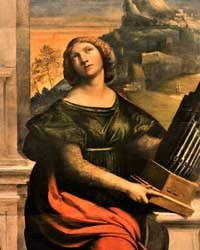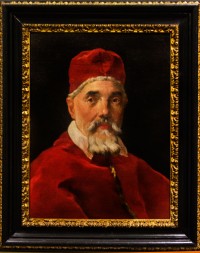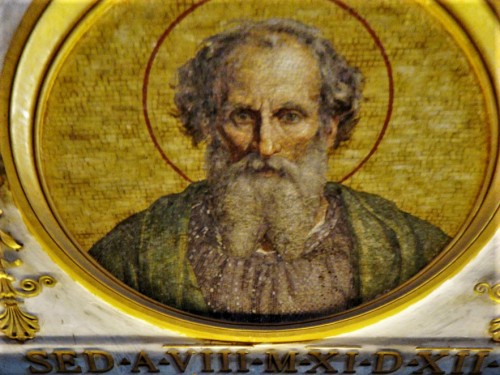
Portrait of Pope Urban I, mosaic in the nave of the Basilica of San Paolo fuori le Mura, pic.Wikipedia
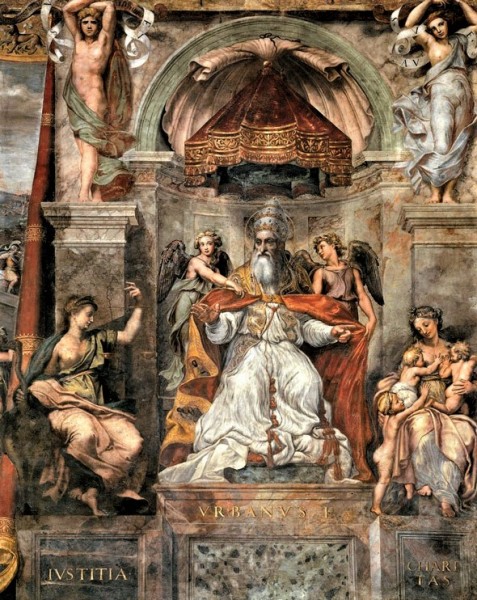
Pope Urban I between the allegory of Justice and Charity, Constantine Hall (Stanze Raphael), Apostolic Palace (Musei Vaticani)
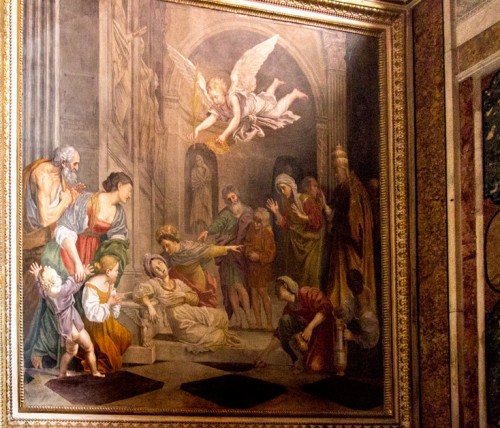
The martyrdom of St. Cecilia, Domenichino, the Polet Chapel, the Church of San Luigi dei Francesi
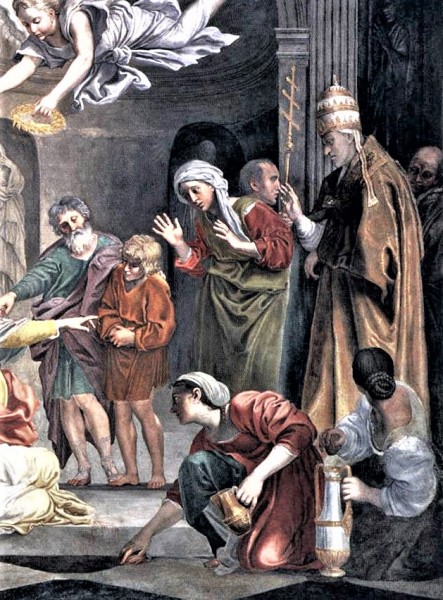
The martyrdom of St. Cecilia, fragment, Domenichino, Polet Chapel, Church of San Luigi dei Francesi
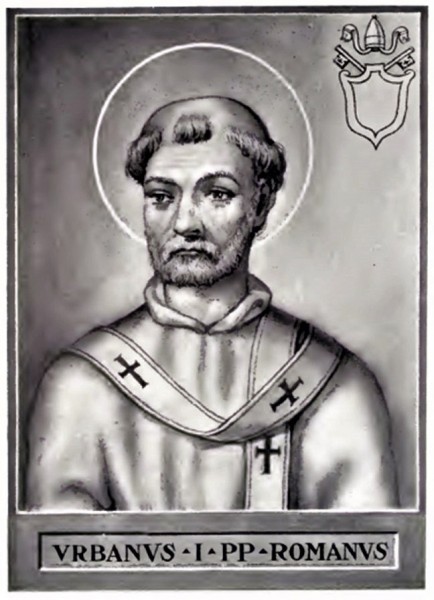
Alleged portrait of Pope Urban I, pic. Wikipedia
We know next to nothing about Urban I. That is why he became an almost ideal figure to create legends. He lived at a time period when Christianity was not a tolerated religion in the Roman Empire, nevertheless the faithful were not repressed or persecuted. Despite this fact, Urban I (in time) became a martyr for the faith, and then a saint, to in the following centuries be named a patron of wine growers, coopers, farmers, gardeners, and a bountiful harvest, an intercessor protecting from storms, hail, drought, frost, and alcoholism. How did this come about?
We know next to nothing about Urban I. That is why he became an almost ideal figure to create legends. He lived at a time period when Christianity was not a tolerated religion in the Roman Empire, nevertheless the faithful were not repressed or persecuted. Despite this fact, Urban I (in time) became a martyr for the faith, and then a saint, to in the following centuries be named a patron of wine growers, coopers, farmers, gardeners, and a bountiful harvest, an intercessor protecting from storms, hail, drought, frost, and alcoholism. How did this come about?
According to the Liber Pontificalis Urban was a Roman, a well-born and well-educated man, which is testified to by his name (urbanus in Latin means urban, cultural, polite, and educated), while his eight-year pontificate was characterized by calmness. The ruling emperor at that time, Alexander Severus was a proponent of the freedom of all cultures, and he was also positively inclined toward Christians. This can be shown by the fact that when a conflict erupted in the city regarding land in the Trastevere, between Bishop Urban (the representative of the Christian commune) and the association of tavern owners the emperor passed a verdict that was favorable to the Christians. The argument concerned obtaining a piece of land that was marked by the martyr's death of the previous bishop of Rome, Callixtus I. Later the Church of Santa Maria in Trastevere was erected in this location.
The only problem with the pontificate of Urban I was connected with the fact (rather common in the early-Christian Church) of the existence of an antipope – known for his moral rigorism and a strict attitude towards apostates, Hippolytus I.

Urban died of natural causes on May 23, 230. According to the Legend of St. Cecilia and Liber Pontificalis, he was buried in the Catacombs of Praetextatus at via Appia.
And where did the rather developed stories of his martyrdom and pontificate marked with heroism come from? Even Dante Alighieri put Urban in Paradise (Divine Comedy, Canto XXVII) as an exemplary pope-martyr. These stories came about a lot later in the V and VI centuries when Christianity became the state religion in the Roman Empire. Then Urban I became one of the heroes in a legend about Saint Cecilia – the one who baptized the later martyr, her husband, and brother-in-law, and also assisted at their death. Besides that, in the house which Cecilia gifted to him, he created a church (the later Church of Santa Cecilia). The legend of St. Cecilia is the same kind of fiction as the execution of the pope by beheading, which was to occur when he converted Roman officers and four hundred legionaries. Such a life corresponded to the needs of the Church, which wanted to depict its most important representatives as warriors of faith, while their sainthood was built upon suffering and martyrdom. The biggest role in creating such a historical policy of the Church was played by Pope Damasus I (second half of the IV century), who wanted to show Rome as a place filled with the martyr’s blood of warriors of faith. The catacombs were marked with inscriptions proclaiming the sainthood of all of Damasus’s predecessors, who “had to” die a martyr’s death, since at that time that was the only way to become a saint.
In time the life of Urban I – bishop of Rome overlapped with the life of another Urban, who was the bishop of the Galician town of Langres and died at the end of the IV century. In the Lives of Saints written later numerous miracles were attributed to him, while starting in the IX century he became a saint of the vines, since according to folk tradition he hid from his enemies among vines, at the same time converting the farmers whom he had encountered. His cult quickly spread in Western and Central Europe, while his competencies widened to include other farming domains. Subsequent popes named Urban – Urban II (d. 1099), and later Urban III (d. 1370) also contributed to the popularization of St. Urban.

And thus the figure of the bishop of Rome came to be one with the story of Urban – patron of wine. On the anniversary of his death (23 May) processions around vines were organized, as well as, the so-called blessing of the fields, while the chapels devoted to him were decorated and adored. In iconography, we can see him in his pontifical robes, with a tiara upon his head, while his attributes are grapes, a chalice, a book, and a sword.
And while the figure of Urban – the guardian of the vine – was rather popular in France and the German lands, in Rome itself we will not see him very often. The most interesting church devoted to him is the old small church of Sant’Urbano alla Caffarella located on the outskirts of Rome, established in the IX century from the pagan Temple of Ceres and modernized in the XVII century by Pope Urban VIII.














